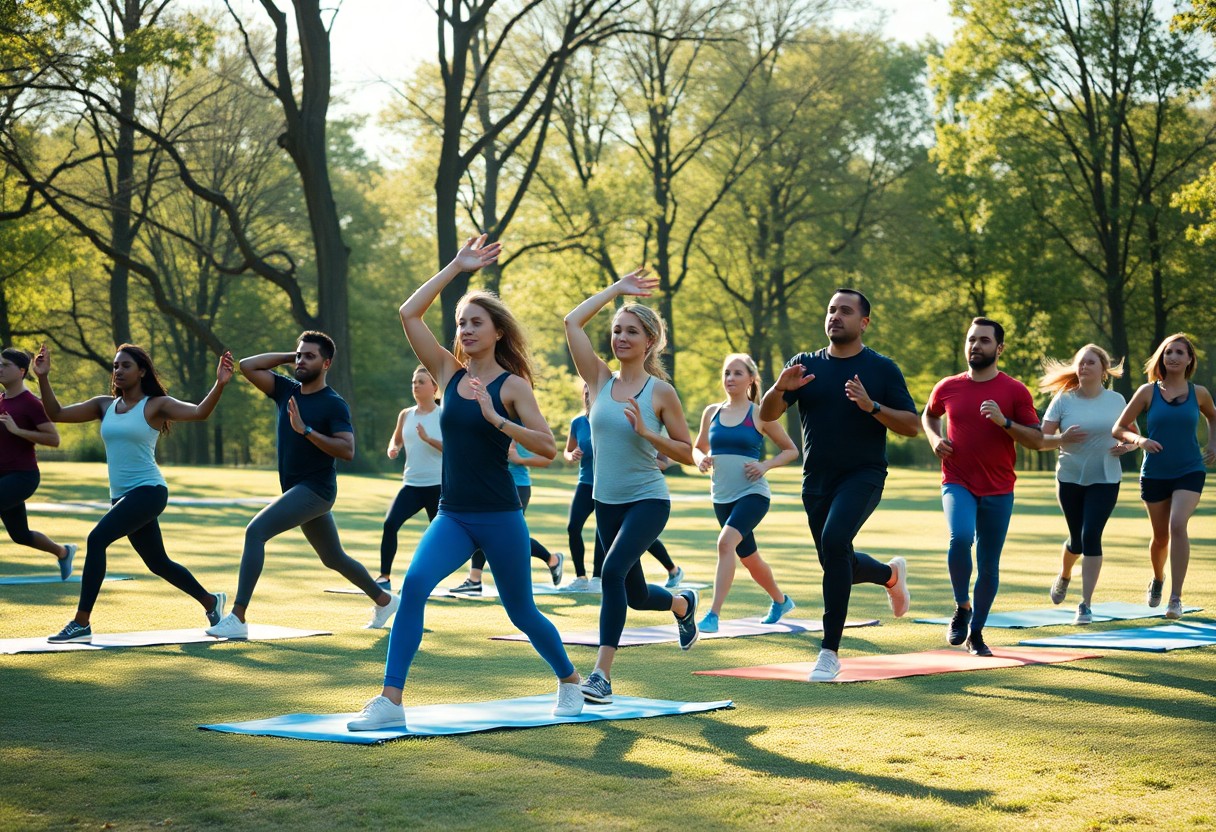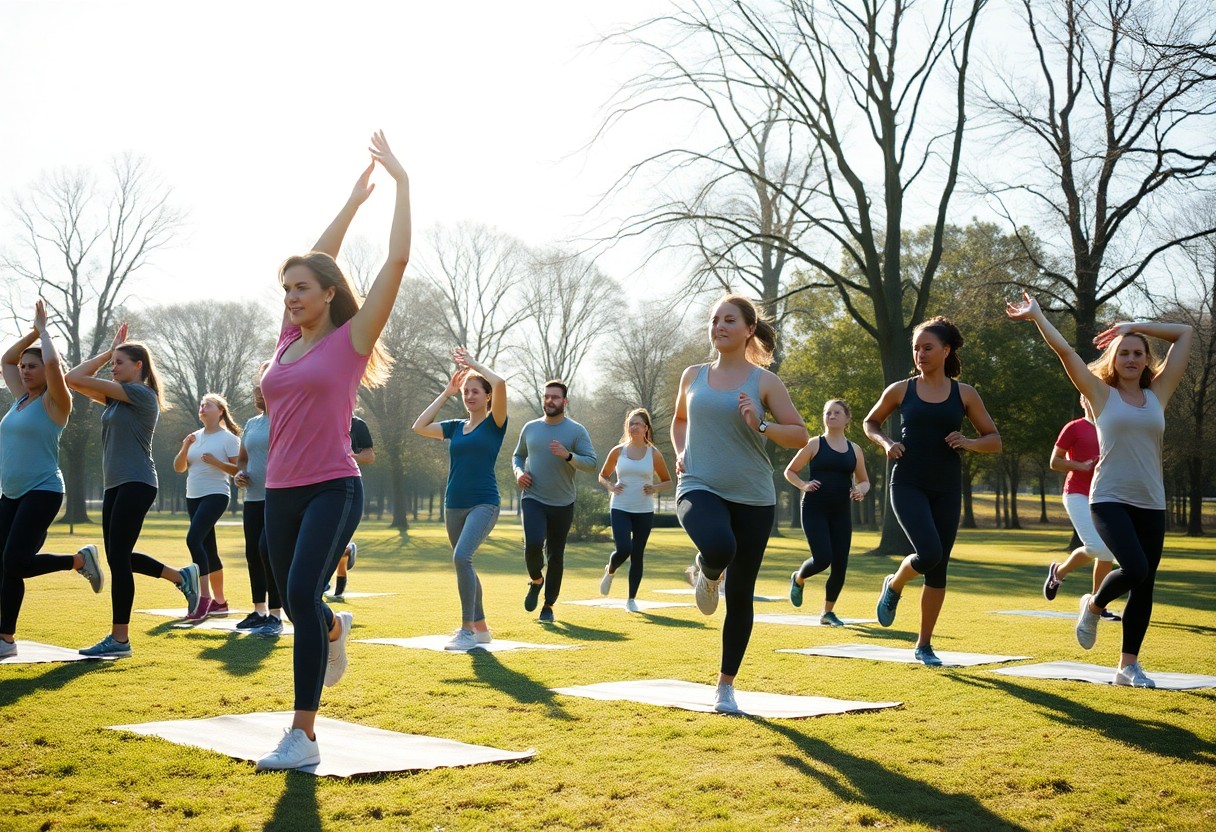It’s time to enhance your fitness routine with the Good Mornings exercise. This powerful movement not only targets your hamstrings and lower back but also improves your overall stability and strength. You’ll find that mastering the proper form can significantly boost your performance in other exercises. For insights on how to execute it correctly and understand its benefits, check out this resource on Good Morning Exercise: Benefits & Tips. Embrace the advantages that Good Mornings can bring to your workout regimen.
Understanding Good Mornings
To fully appreciate Good Mornings as an exercise, it's important to understand their mechanics and benefits. This compound movement is primarily focused on targeting your posterior chain while promoting mobility and stability. Incorporating Good Mornings into your routine can enhance your overall strength and functional movement capacity, making it a valuable addition to your workouts.
Definition and Purpose
The Good Morning is a hip hinge exercise that emphasizes bending at the hips while maintaining a neutral spine. Its primary purpose is to strengthen the muscles along your back and legs, promoting improved posture and enhancing athletic performance. This movement not only prepares your body for more intense exercises but also aids in injury prevention.
Key Muscles Engaged
Mornings primarily engage your hamstrings, glutes, and lower back muscles, contributing to the strength and stability of your entire posterior chain. By reinforcing these key muscle groups, Good Mornings help improve your lifting technique in other exercises, such as squats and deadlifts.
Engaged in this movement, your hamstrings play a significant role in controlling the hip hinge, while glutes provide the necessary power to lift and return to an upright position. Additionally, your lower back muscles work to maintain spinal alignment throughout the exercise, ensuring safe and effective movement. By regularly practicing Good Mornings, you'll not only strengthen these muscles but also enhance overall body mechanics, contributing to better performance in various physical activities.

Proper Form and Technique
You need to focus on maintaining proper form and technique when performing morning exercises to maximize benefits and minimize the risk of injury. This includes paying attention to your posture, alignment, and breathing patterns throughout the movement. Consistency in these elements will enhance your overall performance and ensure a safe workout experience.
Starting Position
Behind every effective exercise lies the proper starting position. Begin by standing tall with your feet shoulder-width apart, ensuring your weight is evenly distributed. Engage your core muscles and roll your shoulders back to create an upright posture. This foundational stance prepares your body for a successful workout.
Execution of the Movement
One of the keys to an effective exercise routine is the execution of the movement. Ensure your movements flow smoothly, focusing on controlled motions rather than rushing through the exercise. Concentrate on your technique, and avoid the temptation to use momentum, as this can lead to improper form and potential injury.
Also, consider incorporating a full range of motion during each exercise to work your muscles effectively. Pay attention to your breath, inhaling during the lowering phase and exhaling as you engage your muscles in the upward phase. This rhythmic pattern not only supports your form but also enhances your overall performance and keeps your body safely aligned throughout the workout.
Common Mistakes to Avoid
After learning the benefits of Good Mornings, it's crucial to be aware of common mistakes that can hinder your progress. For instance, failing to maintain proper form can limit effectiveness and lead to injuries. To enhance your technique, check out How to Do Good Mornings to Build Stronger Legs.
Incorrect Posture
Any deviation from the correct posture can compromise your workout. Ensure your back is straight and core engaged throughout the movement. Poor posture can result in unnecessary strain on your lower back, reducing the effectiveness of the exercise.
Overextending
Mistakes made by overextending during Good Mornings can lead to discomfort and potential injury. It's vital to prioritize control over range of motion. Focus on keeping your movements gradual and consciously stop before overstressing your muscles. This approach will not only enhance safety but also maximize your workout benefits.
A key aspect of avoiding overextension is to listen to your body. If you feel any discomfort or find your form slipping, adjust your range of motion accordingly. By practicing awareness and control, you will ensure that each repetition targets the intended muscle groups effectively while safeguarding against injury.
Health Benefits of Good Mornings
Despite their simplicity, good mornings offer numerous health benefits that can improve your overall well-being. Engaging in this exercise regularly can enhance your strength, flexibility, and posture, all of which contribute to better performance in other physical activities. Incorporating good mornings into your routine may also alleviate lower back pain by reinforcing the muscles that support your spine, leading to improved daily function and reduced risk of injury.
Strengthening the Posterior Chain
Around your body, the posterior chain comprises vital muscles including the hamstrings, glutes, and lower back. Good mornings effectively target these areas, helping to increase strength and endurance. By regularly practicing this exercise, you’ll develop better stability and power, which can significantly enhance your performance in various sports and daily activities.
Enhancing Flexibility
About flexibility, good mornings play a significant role in improving your hamstring and hip mobility. This exercise encourages a deeper range of motion and helps loosen tight muscles, making everyday movements smoother and more efficient.
To further enhance flexibility through good mornings, focus on proper form and control during each repetition. As you lower your torso, aim to feel a gentle stretch in your hamstrings and hips. Incorporating this exercise into your warm-up routine can help improve muscle elasticity over time, contributing to greater overall flexibility in your workouts and daily activities.
Variations of Good Mornings
For those looking to diversify their routine, various good morning variations can target different muscle groups and enhance overall performance. Whether using a barbell, dumbbells, or even resistance bands, each variation provides unique benefits that can help you achieve your fitness goals. Experimenting with these variations will not only keep your workouts engaging, but also ensure balanced strength development.
Barbell Good Mornings
Good morning with a barbell is a powerful exercise that primarily targets your hamstrings, glutes, and lower back. By placing the barbell across your shoulders, you engage your core to stabilize your body while performing the movement. Focus on maintaining proper form by keeping your back straight and your knees slightly bent, allowing for a deeper stretch in your posterior chain.
Dumbbell Good Mornings
An effective alternative to barbell variations, dumbbell good mornings allow for a more versatile workout. By holding a dumbbell in each hand, you can easily adjust the weight to suit your strength level, making it ideal for beginners as well as seasoned athletes. This approach enables you to maintain proper form while also enhancing your grip and control.
This variation also encourages the activation of stabilizing muscles, challenging your balance and coordination. As you lower your torso, aim to hinge at the hips while keeping your back flat, facilitating improved strength in your hamstrings and glutes. Incorporating dumbbell good mornings into your routine can lead to increased flexibility, better posture, and enhanced athletic performance.

Incorporating Good Mornings into Your Routine
Many fitness enthusiasts find that integrating Good Mornings into their morning routine can significantly enhance their strength training regimen. Start by scheduling specific days for these exercises, ensuring you allocate enough time for warm-ups and cool-downs. You can do Good Mornings as part of a lower body workout or as a dedicated exercise on its own. Consistency is key, so aim to keep your routine manageable and sustainable to reap the benefits over time.
Setting Goals
Mornings are an excellent opportunity to set clear goals for your fitness journey, particularly when it comes to incorporating Good Mornings. Define what you wish to achieve, whether it's improving strength, increasing flexibility, or toning your lower back and hamstrings. Establishing specific, measurable targets will help you stay motivated and track your progress, making your morning workouts more effective and rewarding.
Frequency and Duration
Your approach to the frequency and duration of Good Mornings can greatly impact your progress. Aim to include this exercise in your routine two to three times per week, allowing adequate recovery time between sessions. Start with sets of 8 to 12 repetitions and gradually increase the weight or duration as your strength improves.
Hence, balancing frequency and recovery is vital for optimal gains. You should listen to your body and adjust your routine as needed. If you're new to Good Mornings, beginning with lighter weights will not only enhance your form but also reduce the risk of injury. Gradually increasing intensity will promote muscle adaptation and growth while keeping your workouts effective.
Conclusion
The Good Morning Exercise is a valuable addition to your workout routine, enhancing your strength and flexibility while promoting proper form. By incorporating this exercise, you can significantly improve your lower back and hamstring stability. Understanding the proper techniques is vital for maximizing your benefits. You can explore more about the different types and techniques in this Good Morning Exercise: Types and How to Do ... guide. Start your mornings right and reap the rewards in your fitness journey.
FAQ
Q: What is the Good Mornings exercise?
A: The Good Mornings exercise is a strength training movement primarily targeting the posterior chain, which includes the hamstrings, glutes, and lower back. The exercise is performed by bending at the hips while keeping the back straight, often using a barbell across the shoulders. It's designed to improve flexibility, strength, and overall body mechanics.
Q: What are the primary benefits of performing Good Mornings?
A: Good Mornings offer several benefits, including increased strength in the hamstrings and lower back, improved hip hinge mechanics, enhanced flexibility in the posterior chain, and potential carryover benefits to other lifts like deadlifts and squats. Additionally, they help reinforce proper posture and spinal alignment during various activities.
Q: How should I properly perform Good Mornings for optimal results?
A: To effectively perform Good Mornings, stand with your feet shoulder-width apart while gripping a barbell placed across your upper back. Keep a slight bend in your knees, hinge at the hips, and lower your torso forward while keeping your back straight. Lower your torso until it is nearly parallel to the ground, then reverse the motion to return to the starting position. Focus on controlled movements and proper form to avoid injury.
Q: Are there any common mistakes I should avoid when doing Good Mornings?
A: Yes, common mistakes include rounding the back, which can lead to injury, lifting excessive weight without proper technique, and failing to engage the core throughout the movement. Additionally, allowing the knees to move too far forward can disrupt proper hip hinge mechanics. It's important to prioritize form over weight to maximize effectiveness and minimize risk.
Q: Can Good Mornings be modified for beginners or those with limitations?
A: Absolutely. Beginners can start with bodyweight Good Mornings, using a broomstick or a light barbell to establish proper form. Additionally, options such as performing the exercise with a single leg or using resistance bands can provide variations that accommodate different fitness levels and physical limitations. Always consult with a fitness professional if unsure about modifications.













0 Comments